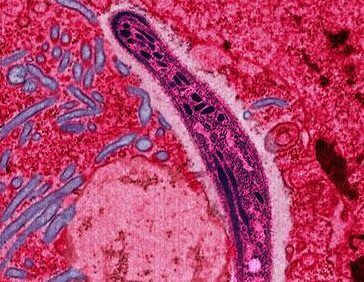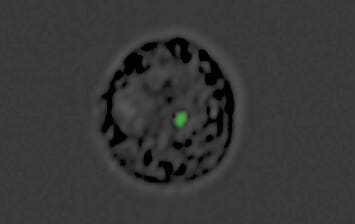Researchers from the Weizmann Institute and their research partners discovered how the malaria parasite tricks the immune system through false messages

In order to eradicate malaria from the world, one must first overcome the cause of the disease - the insidious parasite Plasmodium falciparum which quickly develops drug resistance. Many decades after it was discovered, an effective vaccine has not yet been developed against the parasite since its life cycle is extremely complex. In a new study published in the scientific journal Nature Communications., Weizmann Institute scientists, together with colleagues in Ireland and Australia, discovered that the Plasmodium falciparum parasite is more cunning than they thought: if it is not enough that it knows how to hide from the immune system, it also works proactively to deceive it.
The danger of malaria hovers over nearly half of the world's population. In terms of the number of victims, malaria is in second place in the world among infectious diseases - second only to tuberculosis which is in first place. More than 200 million people are infected every year with malaria, which is passed from person to person through the bites of mosquitoes carrying the parasite. About half a million people die every year from the disease, most of them children under the age of five.
"Malaria is one of the deadliest diseases in the world," says Dr Neta Regev-Rotsky From the Department of Biomolecular Sciences. "It affects mainly developing countries, where every day about 1,000 children die from it. To stop malaria, we must better understand the biology of the parasite - what makes it such a dangerous killer."

בPrevious research Dr. Regev-Rotsky discovered that the malaria parasites communicate with each other while incubating in the red blood cells: they send tiny bubbles less than a micron in size (less than a millionth of a millimeter) that contain, among other things, DNA segments. These bubbles probably signal to the parasites when it's time to transform into their female or male forms - both of which mosquitoes can transmit from person to person. This finding was especially surprising in light of the fact that in order to transmit the message between one parasite and another, when each is inside a different blood cell - the bubbles have to cross six membranes on their way.
The trickery of the malaria parasite allows it to thrive in the patient's blood. If we learn to thwart it, we may be able to develop new ways to overcome the disease in the future
But the plot gets complicated: in a follow-up study in her laboratory at the Weizmann Institute, Dr. Regev-Rotsky found, together with her colleagues, that at the same time as the "conversation" between the parasites, Plasmodium falciparum uses the communication channel to send misleading messages to the immune system. 12 hours after penetrating the red blood cells, the parasites send the tiny bubbles with their DNA to cells called monocytes - cells that are the first line of defense of the immune system against hostile invasion. When the monocytes themselves are attacked, the immune system sends its forces to their aid. In this way, the bubbles effectively turned the monocytes into bait: they "cheat" the immune system by causing it to defend against a simulated danger, while the real infection spreads unhindered and at a dizzying pace in other cells - the red blood cells. When the immune system finally discovers the mistake, precious time has been lost, the infection has spread - and is harder to stop.

Dr. Regev-Rotsky's group identified a molecular sensor, a human protein called STING, which is activated when the bubbles of the parasite penetrate the monocytes. STING is the one that produces the false alarm in the immune system and makes it "think" that its monocytes are in danger. When the scientists silenced the gene that produces the STING protein, the chain of molecular reactions that produce a false alarm was stopped.
"The trickery of the malaria parasite allows it to thrive in the patient's blood," says Dr. Regev-Rotsky. "If we learn to thwart it, maybe in the future we will be able to develop new ways to overcome malaria."
Dr. Yifat Ofir-Birin, Paula Abu Kerem and Tal Giladi from the Department of Molecular Sciences of the Weizmann Institute participated in the study; Dr. Ziv Porat mDepartment of Life Sciences Research Infrastructures of the institute; Dr. Dror Avni and Prof. Eli Schwartz from the Haim Sheba Medical Center in Tel Hashomer; Dr. Motti Gerlitz from Tel Aviv University; And likewise, scientists from the Walter and Eliza Hall Institute of Medical Research in Melbourne, Australia, from the University of Melbourne, from La Trobe University in Victoria, Australia, and Trinity College in Dublin, Ireland.

2 תגובות
the grammarian
exciting